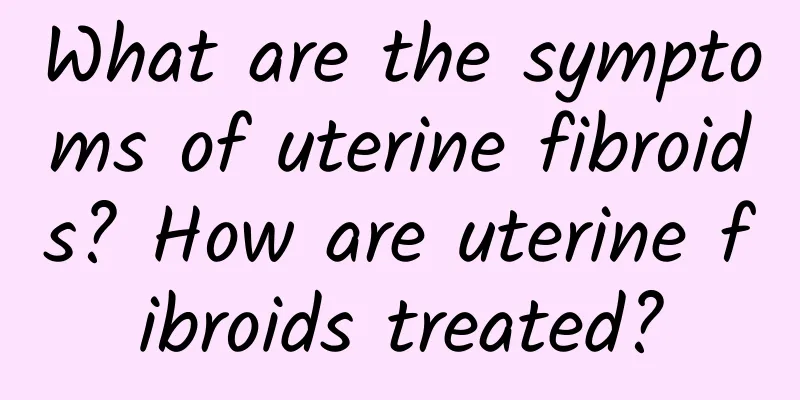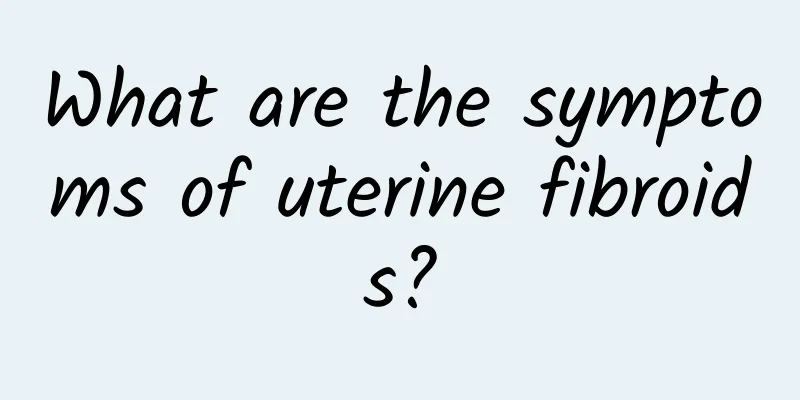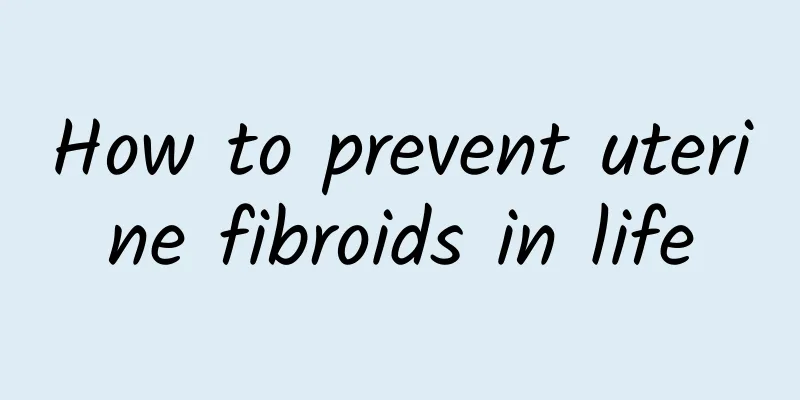What are the symptoms of uterine fibroids? How are uterine fibroids treated?

|
Uterine fibroids, also known as uterine leiomyoma, are common benign tumors of the female genitalia. Most are asymptomatic, and a few present with vaginal bleeding, abdominal contact with the tumor, and compression symptoms. For example, pedicle torsion or other conditions can cause pain, which is common in multiple uterine fibroids. So, what are the symptoms and treatments of uterine fibroids? Uterine bleeding is one of the most common symptoms of uterine fibroids. Among them, cyclical bleeding is more common, which can be manifested as increased menstrual volume, prolonged menstrual period or shortened cycle. It can also be manifested as irregular vaginal bleeding during menstrual cycle. Uterine bleeding is common in submucosal fibroids and intramural fibroids, while subserosal fibroids rarely cause uterine bleeding. A few patients may experience a feeling of lower abdominal distension and back pain. When the pedicle of subserosal fibroids is twisted or the uterine fibroids undergo red degeneration, acute abdominal pain may occur. It is also not uncommon for fibroids to be combined with endometriosis or adenomyosis, which may cause dysmenorrhea. The following is a brief introduction to the methods that can be used to treat uterine fibroids: (1) Radiotherapy for uterine fibroids is used for patients who are intractable to drug treatment, have contraindications to surgery or refuse surgical treatment, but also for patients with pelvic inflammatory disease or malignant changes in uterine fibroids. (2) Drug treatment for uterine fibroids can be introduced in daily life. In recent years, with the continuous progress of society and the continuous improvement of hospitals, drug treatment has made many new advances. However, patients should pay attention to diagnostic scraping before choosing drug treatment, and perform endometrial biopsy to eliminate malignant changes. (3) Surgery is a commonly used treatment for uterine fibroids. Hysterectomy: Hysterectomy doctors generally recommend total hysterectomy, especially for some patients with cervical hypertrophy and lacerations. However, if the patient is in poor general condition and the technical conditions are limited, total hysterectomy is the only option. The incidence of stump cancer is only about 1-4%, but regular check-ups are still required after surgery. Uterine fibroids are a very serious disease and should be treated as soon as possible. Once diagnosed with uterine fibroids, you must go to the hospital for comprehensive treatment as soon as possible to help the recovery of the disease. |
Recommend
Abnormal leucorrhea is an alarm for women's health
Most of the increased leucorrhea is caused by inc...
What is adolescent functional uterine bleeding? What are the main clinical manifestations of adolescent functional uterine bleeding?
Adolescent functional uterine bleeding refers to ...
"Exercise Tips" Can't Get Rid of Obesity? Push-ups and squats are moderate-intensity exercises that strengthen your resistance
The number of local cases of COVID-19 continues t...
Frequent vaginal douching may increase the risk of ectopic pregnancy
The latest British gynecological research shows t...
Diagnosis and treatment of menopause
What are the treatments for menopause? This is wh...
How to check scanty menstruation clinically?
Menstruation is a sign that women have officially...
The dangers of functional hyperprolactinemia
Hyperprolactinemia refers to a syndrome caused by...
What medicine is good for adults with influenza?
Adults with influenza can usually take antiviral ...
The impact of irregular menstruation on women
Modern medical research has found that estrogen l...
Auxiliary examination of cervical precancerous lesions
The appearance of cervical precancerous lesions h...
The dangers of pelvic inflammatory disease that female friends need to pay attention to
Clinically, the harm of gynecological diseases to...
What are the symptoms of spontaneous abortion?
Symptoms of spontaneous abortion mainly include v...
How severe is vaginitis? The severity varies from patient to patient.
I believe everyone is familiar with vaginitis. Va...
What are the dangers of menopause to women?
What are the dangers of menopause? Many women are...
Irregular menstruation may also be caused by psychological factors
Irregular menstruation may also be caused by ment...









